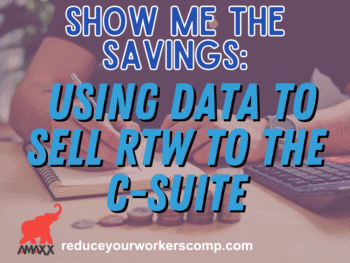
Tackling the RTW Communications Challenge
Some facts to begin with:
- Restrictions are loosening, businesses are re-opening and companies are developing their strategies to return their non-critical infrastructure workers back to work.
- According to Gallup data, nearly two-thirds of workers have worked remotely during the pandemic. Of those, just over 40% would prefer to return to work in their office, while about 6 in 10 would like to continue working remotely as much as possible.
- Despite a general societal pivot toward re-opening, COVID-19 remains a threat to health, business continuity and company reputations.
As we invite employees who are not critical infrastructure workers to return to the office, it is important that we not miss the fact that we are asking them to leave the relative security of their own home, community and safe routines. Work-from-home employees now have control over who they allow in their space and how often their doorknobs are disinfected. Once they leave home, they cede that control, and for some, that’s a big deal.
Click Link to Access Free PDF Download
“13 Research Studies to Prove Value of Return-to-Work Program & Gain Stakeholder Buy-In”
Ready, Set, Huh!?!
My observation is that most companies are doing an admirable job of thinking through their RTW priorities and how they can return people to work in waves. They are also working to engineer changes in office environments and to establish policies designed to mitigate the risk of COVID-19 transmission in the workplace.
Employers are increasingly ready with their staged plan and set to safely welcome their people back to the office. But where many employers seem to be struggling is in the communication of their RTW strategy, and as a result, employees are left to wonder: “Am I supposed to go back to work now?” “What if I’m not comfortable with the risk?” “What if I want to return, but my group has not been called yet?” “How can I make sure I’ll be safe?”
A Systematic Approach to Clear Communication
In an article about COVID-19 messaging that appeared in our May 8 Brief, I invited readers to request a communications tool – a set of questions designed by our communications partner Chuck Reynolds to guide the creation of clear, consistent and trustworthy messaging. Here are some thoughts about using these questions to communicate with non-critical infrastructure workers about RTW:
- Who is the message for? The easy answer here is “employees who are currently working from home,” but that answer misses some important thinking about the mindset of the people who will be receiving your messages. One factor to consider is that employees will have differing perspectives on the risk they will face traveling to/from and being at work. One group of employees will be unconcerned about risk, while another – perhaps because they help care for an elderly parent or are themselves vulnerable – may be highly fearful of contracting COVID-19. Many others will fall along the spectrum between these two extremes.
- What do you want your employees to do? Again, the simple answer may be: “Come back to work when their group is scheduled to return.” But there are many other things you want to communicate. To the unconcerned group, you want to make sure they understand what will be expected of them when they return (distancing, mask-wearing, etc.). Strongly worded expectations will comfort those who are more concerned about risks. For people who may be high risk or have high-risk people they care for, you want to provide them with clear instructions about who they should contact about their concerns and any related policy requirements.
- What do they need to know? Your answers to this question need to be an extension of the first two questions – of what it is you want different segments of employees to do. For instance, in addition to knowing that they will be expected to practice preventive behaviors at work, unconcerned employees should know that compliance with policies will be monitored and that there will be consequences for disregarding the safety of their fellow employees. Further, you’ll want to be clear that your company’s COVID-19 strategy and RTW plan is fluid – that the organization is monitoring both internal and external (community) data, and that plans are subject to change if, for instance, there is a surge of cases in the community.
- What do they need to believe? You may be able to convince employees who don’t have to be in the office that they must risk their safety to return to work, but it’s best if they return to work because they believe it’s best for them/their team/the company. Those who are concerned about disease risk need to believe that the company is taking all appropriate measures to mitigate risks. All employees need to believe that the company is acting in the best interest of its employees. And in my opinion, all employees need to believe that it is their personal responsibility to not only help prevent COVID-19, but to work with their colleagues and teams – wherever they are – to help innovate ways to be both safe and productive, helping to drive business results at this critical time.
FREE DOWNLOAD: “13 Research Studies to Prove Value of Return-to-Work Program & Gain Stakeholder Buy-In”
Two Final Thoughts
First, because we are in a fluid situation, it will be important to keep employees informed. Regular communications should update employees on the status of relevant community data, how things are going with the current RTW wave and what’s coming next. In the absence of regular communications during times like these, rumor mills will run hot.
Second, words need to be backed by actions. If employees in the first RTW wave don’t feel safe, they will find ways to express their concerns to colleagues, and it will be all the more difficult to convince concerned employees in the second wave to return.
I have just scratched the surface. The tool includes additional guidance to help you answer each question. I recommend you request it and use it to map out your RTW communications.
As always, if you’re doing something on RTW communications or anything else to keep your employees safe and productive, let us know. Perhaps we’ll share your story.
Be well and stay safe.
FREE DOWNLOAD: “13 Research Studies to Prove Value of Return-to-Work Program & Gain Stakeholder Buy-In”

















